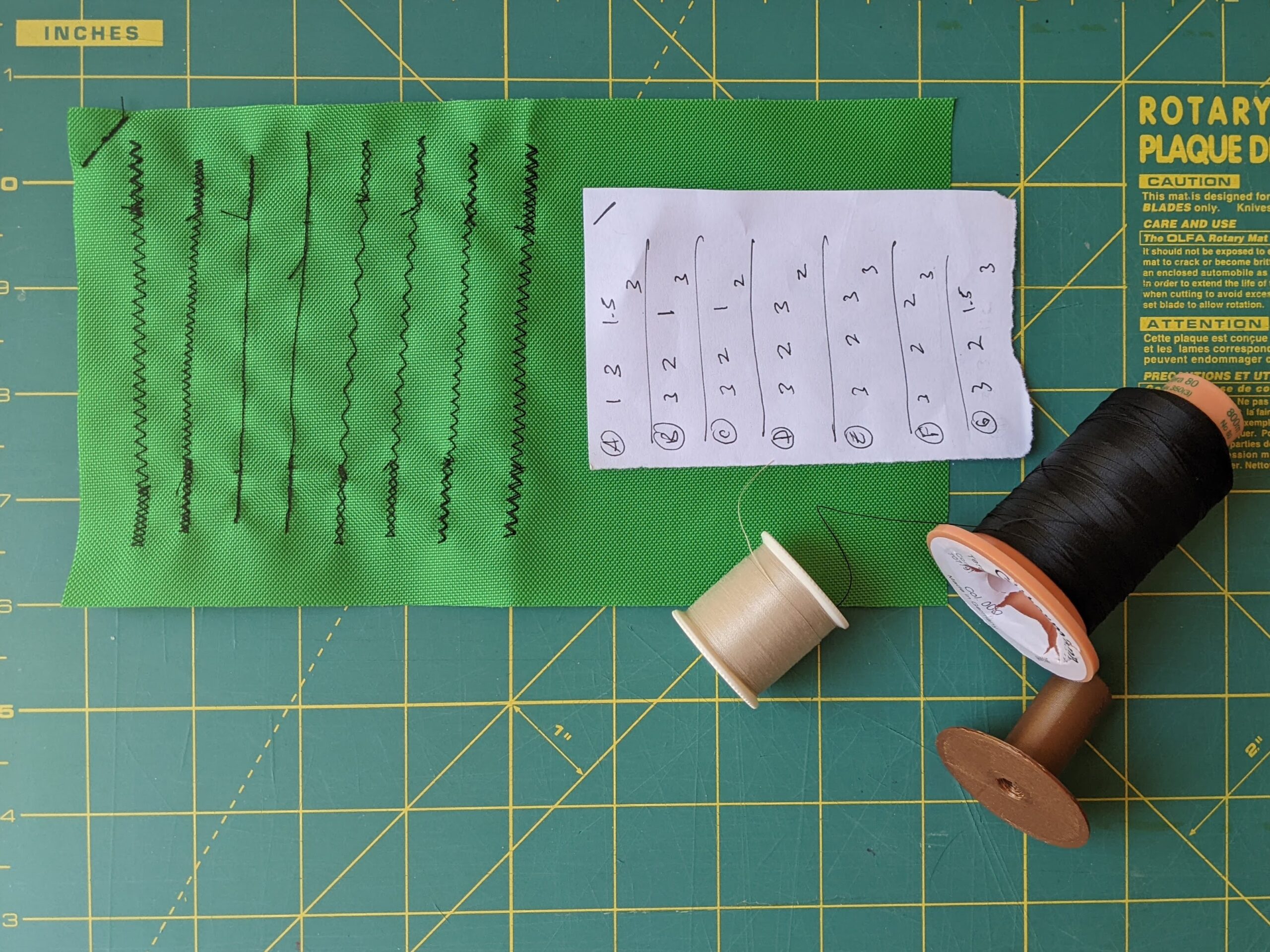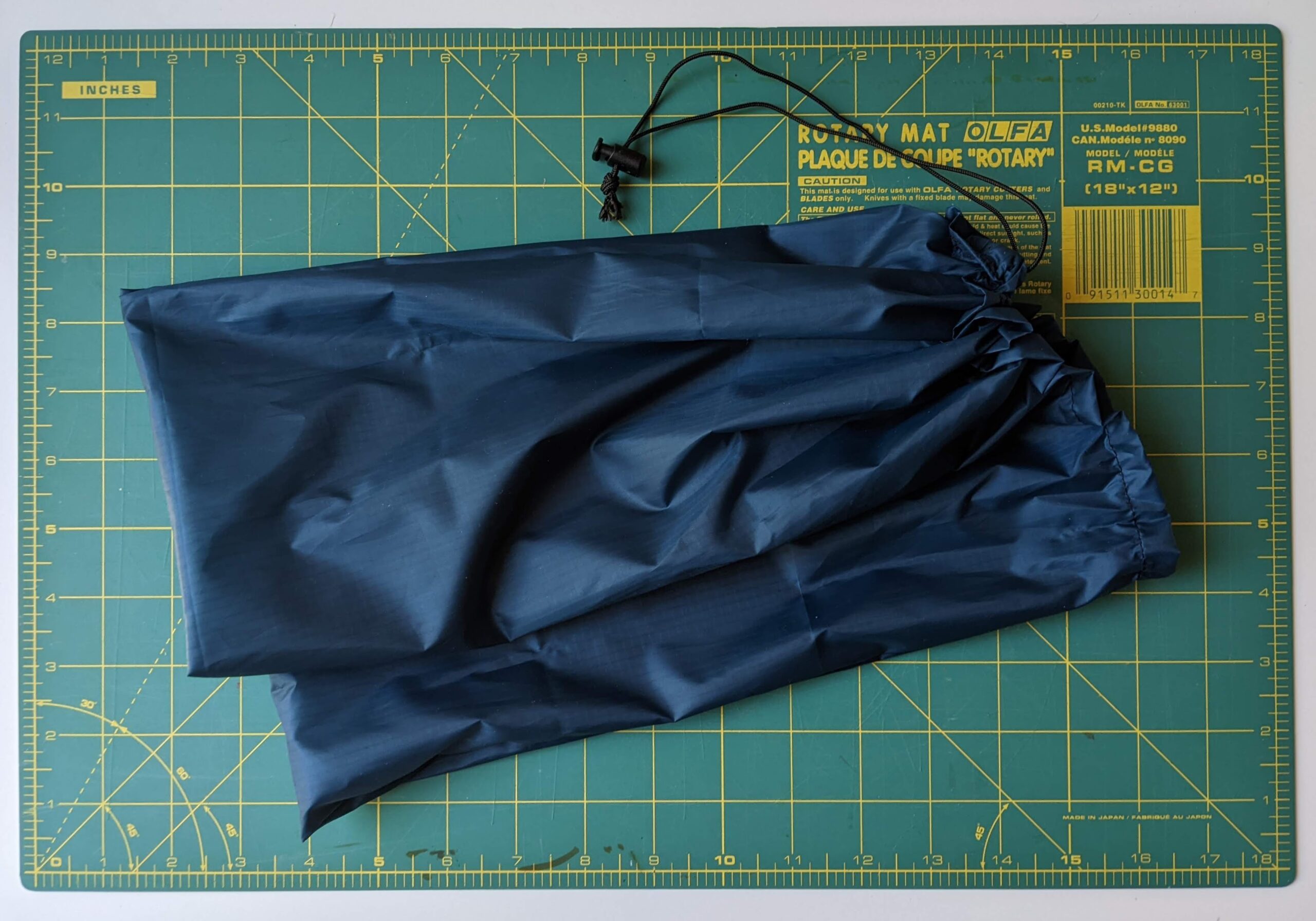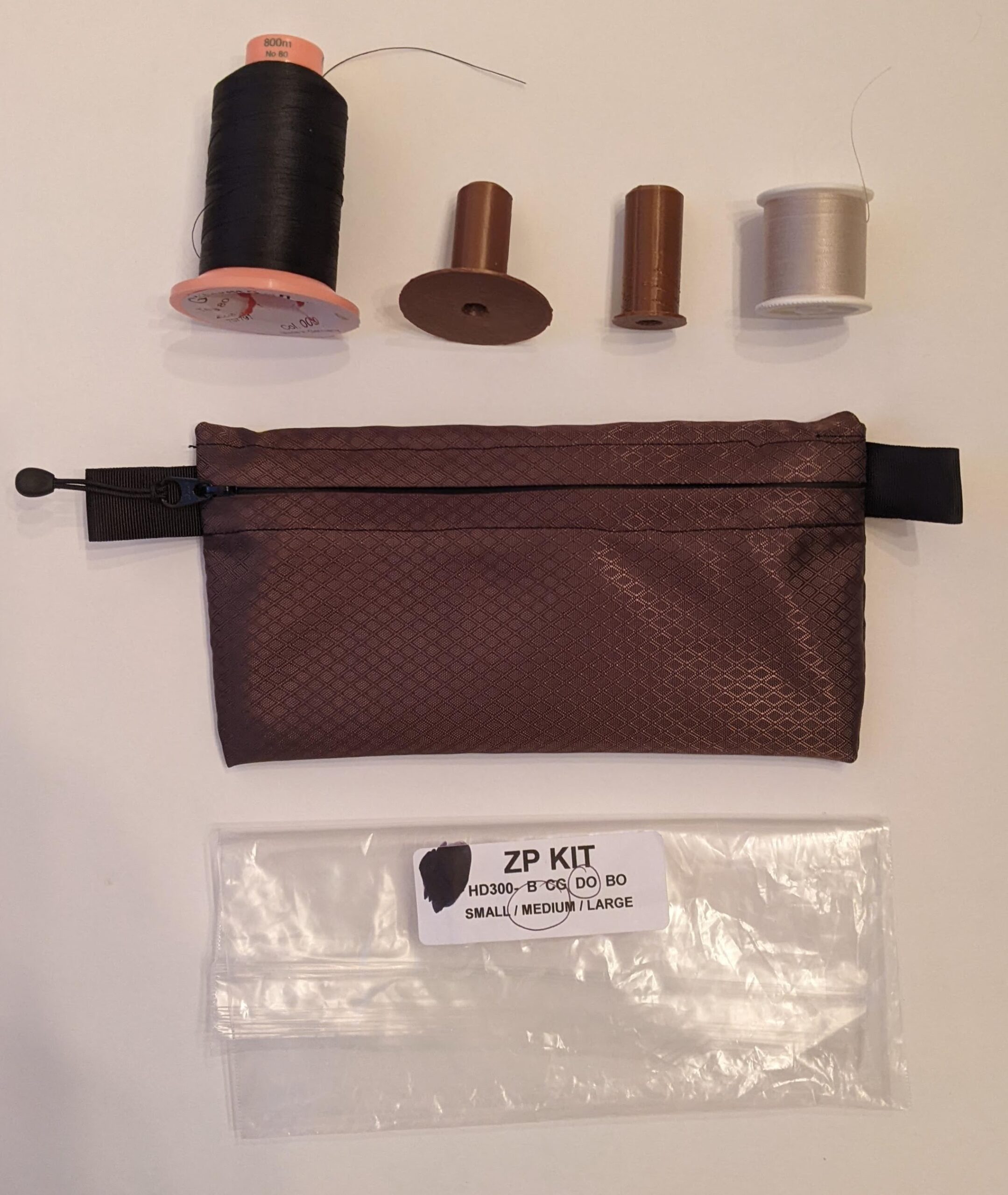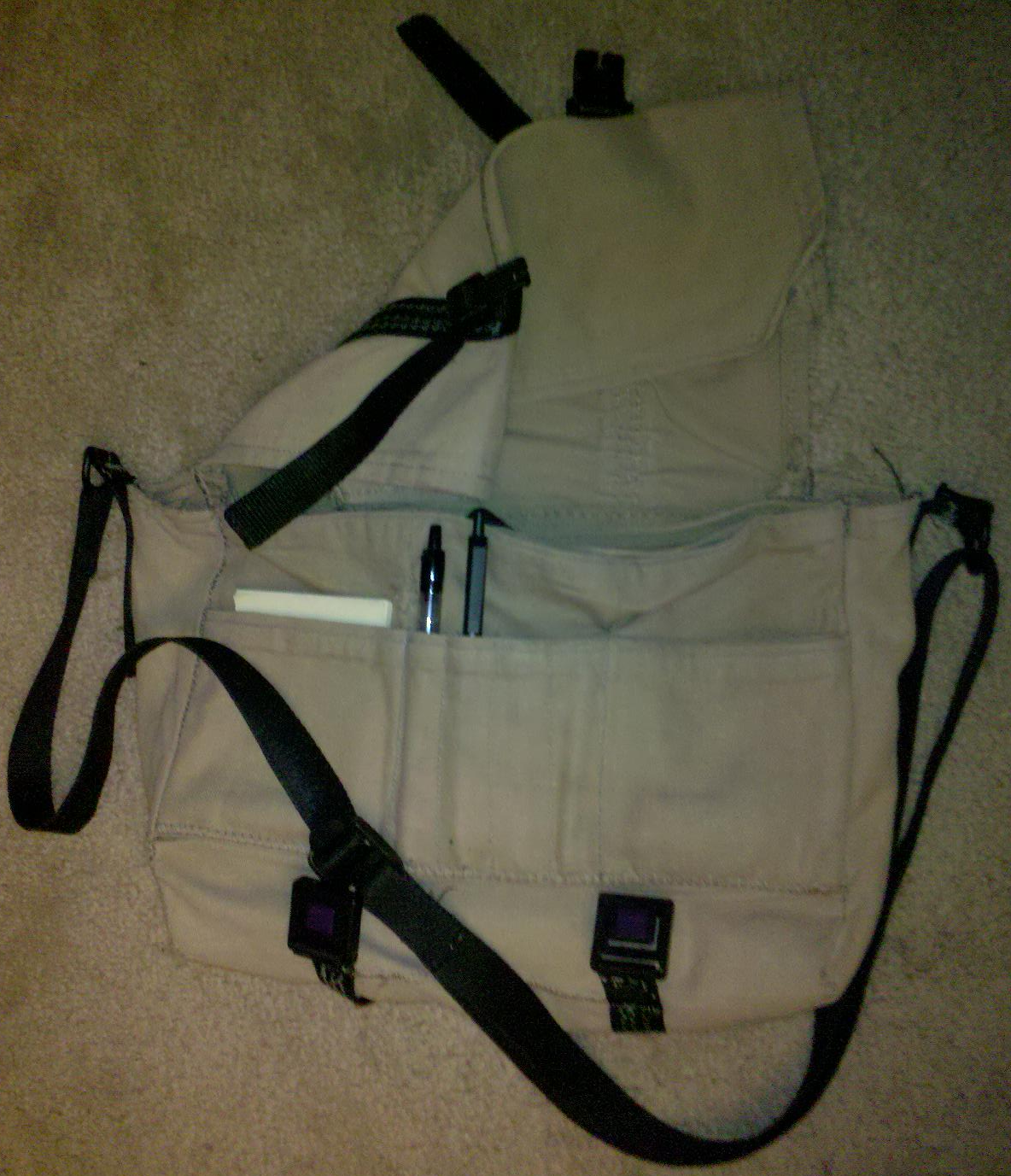
Bag without notes
In college I used to carry a camera bag where I kept my stuff. Car keys, notebook, pens, pencils, etc. This was an old faux-leather camera bag my dad used to use years ago. I loved that thing. Unfortunately, it was stolen out of a friend’s car while we were at a concert.
Over the next few years I thought about what I liked about that bag, what I liked about other bags I had seen, and what I would want in an ultimate bag. I wanted a bag made from tough canvas, hopefully as tough or tougher as denim, and preferably a khaki color. I ended up going with a relatively thick canvas from a fabric store.
I also wanted a bag that was big enough to accommodate a full size 3″ binder (the type I thought I might use in grad school), small pockets, wide pockets, a large pocket, and a spot for pens and pencils. It has thick nylon straps around the bag for holding it together and surprisingly expensive plastic buckles. I sewed the entire thing with khaki colored upholstery thread.
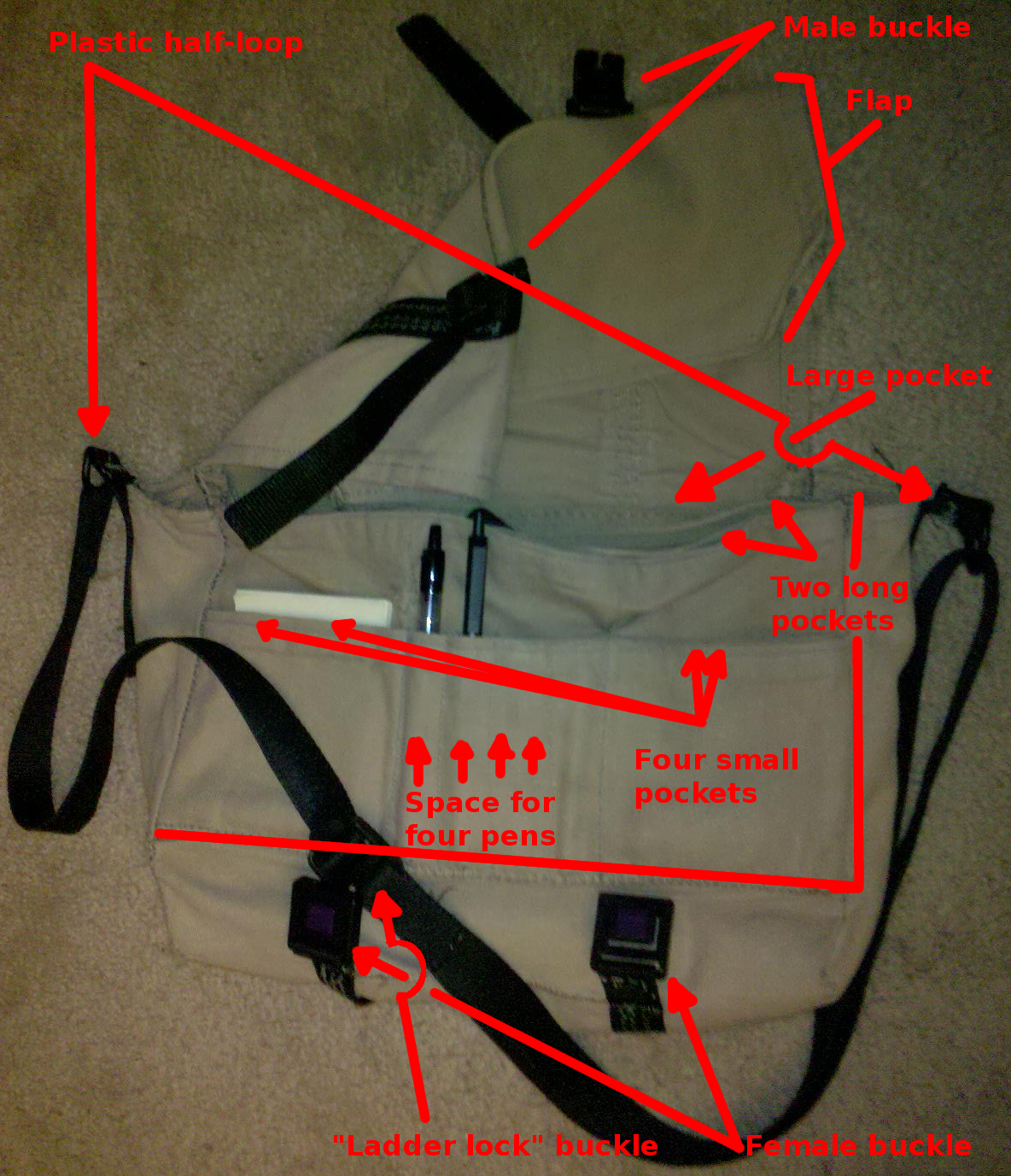
Bag with notes
If I were to re-make this bag, I would change several things:
- I would try to put the pen holder flaps horizontally rather than vertically. When the bag is mostly empty the vertical pens poke the bag flap upwards. I think the bag would probably fit better if pen holders were horizontal. It would also make it easier to reach in and grab a pen when the top flap is buckled down.
- I think it would be pretty useful to have one or two small pockets on either side for stowing away a pen on the outside of the bag.
- I don’t really ever use both long pockets. I’d probably nix one.
- I’m always using the four small pockets – they’re incredibly useful. I’d definitely keep those. However, I think they might be even more useful if they had a velcro flap to keep them closed. I have a feeling velcro is a lot easier to attach than zippers. On top of that, zippers can jam – velcro is basically all good.
- I would make the large interior pocket a little wider. It’s about four inches wide – it could be widened to about six or so.
- I would absolutely, positively print all of the plastic buckles on my MakerBot.
- I would add a plastic lanyard/carabineer/key hook. Sometimes I want to toss my keys in and don’t want to worry about them bouncing out (not that they ever have).
- When I sewed it together I used a setting on the sewing machine that put the thread seams really close together. With the thickness of the thread and the closeness of the seams, this ended up essentially making perforations in the cloth. I would still use thick canvas and thick upholstery thread, but I would set the seams to be wider apart.
- I’ve often thought that the bag would be a little better if it were lined or reversible. If I’m going to line the bag, I might as well make it reversible anyhow. If I did this, I would make one side black and one side khaki color. I’ve used this bag as a pillow more than once – and having two layers would make it more… fluffy.
- I’ve been caught in the rain with this bag on more than one occasion. While this has never been much of a problem, I think a thicker canvas (perhaps the kind used as a painter’s tarp – the kind that’s partially sealed with plastic and/or rubber) would make an excellent water repellent version.
- I’ve taken to carrying zip ties in my laptop backpack. They’re just always useful. I think it would be nifty to have a long thin pocket where I could stash a few of these. They would take up practically no room and also act like ribbing.
- Have you ever taken a good look at those luggage tags at the airport? Whenever I go to an airport, I always snag several of them. They are springy and very very difficult to break.
- I would definitely use a much wider carrying strap. I think something about three inches thick would be ideal. Perhaps seat belt strap material?
- What about a spot for sticky notes (already there in the small pockets), a cell phone, sunglasses, bluetooth, or camera? Maybe a spot for my sonic screwdriver…
Custom Every Day Carry Bag- My Ultimate Bag
- Custom Every Day Carry (EDC) Bag
- Sewing Practice
- EDC Bag Materials, Designs, Etc

